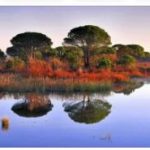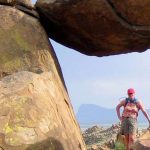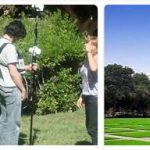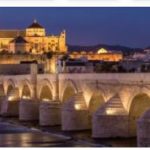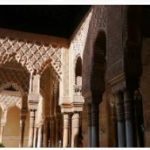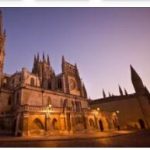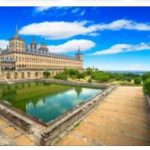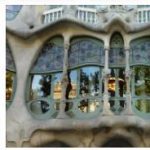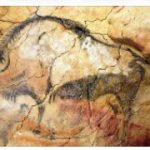The laurel forest on the Canary Island of Gomera is a relic of a subtropical landscape that has largely disappeared today. The heart of the national park consists of an evergreen cloud forest with ferns up to 2 m high, long beard lichens hanging from the trees and gnarled branches overgrown with moss. Numerous streams with waterfalls meander between the trees.
Garajonay National Park: Facts
| Official title: | Garajonay National Park (Canary Islands, Gomera Island) |
| Natural monument: | since 1981 consisting of the six national forests of Agulo, Alajero, Hermigua, San Sebastián, Valle Gran Rey and Vallehermoso with an area of 39.84 km 2 and 70% with laurel trees; eroded volcanic plateau with volcanic cones such as Agando, Ojila, La Zarcilla and Las Lajas; subtropical climate with annual rainfall of 600 to 800 mm |
| Continent: | Europe |
| Country: | Spain, Canary Islands |
| Location: | Center of the island of Gomera, west of the island of Tenerife |
| Appointment: | 1986 |
| Meaning: | vegetation that has largely disappeared in Europe |
| Flora and fauna: | Vegetation with 450 plant species, 34 of which only occur on Gomera and 8 only in the national park, including the laurel plants of the species Laurisilva canaria and Laurus azorica as well as Persea indica, shrub layers with 3 to 5 m high tree heather, gale plants such as Myrica faya, which belongs to the strawberry trees Species Arbutus canariensis, the holly species Ilex canariensis, the species Maytenus canariensis, which belongs to the spindle tree family, the juniper species Juniperus cedrus and the elderberry species Sambucus palmensis; 4 species of bat and 27 species of birds such as white-tailed laurel pigeon |
An evergreen subtropical carpet
Although well traveled, the Dutch writer Cees Nooteboom was deeply impressed by Gomera, one of the seven large islands of the Canary Archipelago: »Immediately after San Sebastián you reach a high, stony, forbidding landscape in which nothing can grow. Stone. Only up there, in the Garajonay National Park, does the landscape change (…). Often there is thick fog there during the day, you drive through a Nibelungenland (…) and then through the sharpest hairpin curves that you have mastered in your life (…) and all of a sudden, almost explosively, a bright sun pops you in the face, and you are in the tropics, in a Balinese landscape with palm trees (…). ”
In terms of landscape, Gomera is an island of contrasts that unites several climate zones in a very small space. From the center of the island, the main valleys make their way down to the coast like oversized folds of rock. These deeply cut »Barrancos« are separated by mountain ridges up to a thousand meters high. In such a partly impassable landscape it is not surprising that the Gomeros invented their famous whistling language »El Silbo«, because the way to the next valley is time-consuming and involves great effort. Depending on the wind strength, you can have a chat over several kilometers with »El Silbo«.
At the fishing village of Playa de Santiago, in the barren and arid south of the island, sun and warmth are guaranteed even in winter; Cacti, agaves and milkweed plants line the streets. But the higher the serpentines snake up on the way into the interior of the island, the greener and denser the vegetation becomes, Canarian willow as well as honeysuckle and buckthorn plants spread out. The crowning glory is an evergreen laurel forest, the Bosque El Cedro! The name of this subtropical jungle, nourished by the trade wind, seems misleading today, because due to centuries of overexploitation, there are only very few cedar stocks on Gomera.
According to estatelearning, the most important prerequisite for the diversity of plants is high rainfall. The clouds that have moved over Lanzarote and Fuerteventura rarely rain on the almost 1500 meter high mountain slopes, but the laurel trees and heather “milk” the swirling clouds. The mist settles on their leaves and drips to the ground. A single laurel tree removes more than 2500 liters of condensation from the clouds every year. Botanists estimate that this indirect precipitation exceeds the direct precipitation by a factor of twenty in places.
Forest fires in the summer of 2012 caused great damage in the Garajonay National Park.
Nature thanks in its own way for the life-giving water: the hiker opens up an almost prehistoric landscape with plants and trees that were still at home in the Tertiary in today’s Mediterranean region. Ferns as high as a man grow in the undergrowth, the thick trunks are covered with moss, and long lichen beards hang down from the branches. In places the green is almost impenetrable, and the trees seem to thrash with the damp branches. Clouds move like cotton balls through the gnarled, tangled branches and create a fascinating play of light and shadow. If the fog is too thick, however, you literally cannot see your hand in front of your eyes – a ghostly scene.
In order to preserve the unique vegetation of the laurel forest for posterity, the central highlands of Gomera were declared a national park and named after the highest mountain, the Garajonay; since then, a third of the island’s area has been protected. And this is a good thing, as there are several thousand different plant species on Gomera, 34 of them cannot be found anywhere else in the world.

